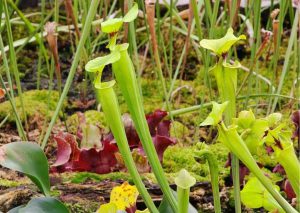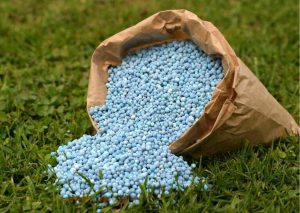Every ecosystem has a vital role in maintaining the health of our world. Forests and phytoplankton are our lungs and purify the air. Our lands and seas provide us food to put on our tables, while rivers, streams, and aquifers provide the lifeblood to sustain us and our world. Like our bodies, the world has its own way of filtering and cleaning water, which is by the use of wetlands.
What are Wetlands?

The US Environmental Protection Agency defines wetlands as “areas where water covers the soil or is present either at or near the surface of the soil all year or for varying periods of time during the year, including during the growing season” (https://www.epa.gov/wetlands/what-wetland). There are many different types of wetlands globally, but they all serve the same function: to slow water flow. Wetland plants are specialized to survive in soggy soil. They help slow the water, filter out any nutrients, and allow sediments to sink. The cleaned water can then settle into the aquifers or flow into streams or oceans.
According to NOAA’s (National Oceanographic and Atmospheric Administration) Office for Coastal Management, more than 31 percent of the land in Florida is wetlands. Most of these are freshwater, and about 10% are saltwater marshes and mangroves. They help clean our waters, provide erosion control, create a buffer during hurricanes (mangroves and saltwater marshes), nurseries for fish, nesting areas for birds, and food for animals.
Life in Wetlands

Let’s talk about the Mosquito in the room. Where there is slow-moving or still shallow water, there are mosquitos. Mosquitos often give wetlands a lousy reputation, but they provide a great food source for bats, birds, reptiles, amphibians, and other insects. They, and many other insects, also provide a food source for our native carnivorous plants, including sundews, pitcherplants, and bladderworts.
Many beautiful plants and wildlife depend on wetlands, including wading birds, ducks, and other wildlife. We can see Bald Eagles, Swallow-tailed Kites, and Snail Kites hunting in the wetlands. We also have many reptiles and amphibians that depend on this habitat to survive.
Decline in Wetlands
As the population of Florida increases, the need for more housing also increases. Wetlands occur in low-lying areas that have poor drainage. Some even dry out during periods of no rain giving the appearance that the land is suitable for homes. These areas quickly fill up during major storm events and then slowly drain. Developers fill in these areas to make sure the area is safer for building homes. It is important to save our naturally occurring wetlands for the future health of our waters and the animals that call them home.
What can you do?

You can become stewards of our wetlands and advocate for their preservation. As was mentioned they’re nurseries for many of our freshwater fish, homes to game fowl, and many other animals and plants. These are all excellent examples of why people come to our great state.
You can also minimize the pollution that enters these areas by reducing our fertilizer use. Make sure that motor fluids and other hazardous materials are captured and disposed of properly. Surrender exotic pets to a shelter or a new home. Finally, use caution when deciding on planting house plants in your landscape. Often they can get out of hand.
Visiting a Wetland
Putnam County has many ponds, lakes, rivers, and creeks that have wetlands associated with them. To see a site that shows many of the wetlands, visit https://soils.ifas.ufl.edu/wetlandextension/counties/putnam.htm. This map also provides four wetland areas that you can visit, including Dunns Creek Conservation Area, Murphy Creek Conservation area, Caravelle Ranch Wildlife Management Area, and Etoniah Creek State Forest.
For More information:
What is a Wetland – US EPA
Protecting wetlands– St. Johns River Water Management District
Native Aquatic and Wetland Plants – UF/IFAS EDIS Topic List
Environmental Consequences of Water Withdrawals and Drainage of Wetlands – UF/IFAS EDIS Publication
 4
4
